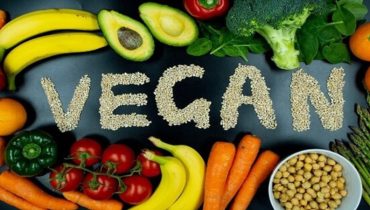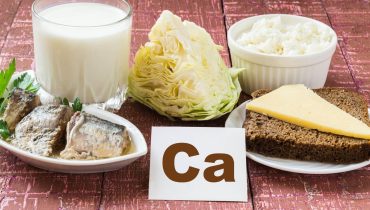Food labels are essential tools that provide critical information about the nutritional content and ingredients of the foods we consume. However, understanding these labels can sometimes be challenging due to the technical jargon and various terms used. This article aims to simplify the process of reading and understanding food labels, empowering you to make healthier and more informed dietary choices.
The Importance of Food Labels
Food labels are designed to help consumers make informed choices about the foods they eat. They provide valuable information about the nutritional content, serving sizes, and ingredients, which can help you manage your diet and maintain a healthy lifestyle. By understanding how to read food labels, you can better assess the nutritional value of the food, avoid harmful additives, and ensure that you’re meeting your dietary needs.
Key Components of a Food Label
Serving Size and Servings Per Container:
Serving Size: This indicates the amount of food that is considered a single serving. It is essential to compare this to how much you actually eat, as all the nutritional information on the label is based on this amount.
Servings Per Container: This tells you how many servings are in the entire package. If a package contains multiple servings and you eat more than one serving, you will need to multiply the nutritional information by the number of servings consumed.

Calories:
Calories provide a measure of how much energy you get from a serving of this food. This section helps you manage your energy intake. Balancing the number of calories you consume with the number of calories your body uses is key to maintaining a healthy weight.
Nutrients:
Total Fat: Includes saturated fat and trans fat, which you should try to limit, as high intake can lead to heart disease. It also includes monounsaturated and polyunsaturated fats, which are healthier fats.
Cholesterol: Too much cholesterol can increase the risk of heart disease.
Sodium: High sodium intake can lead to hypertension and cardiovascular problems.
Total Carbohydrate: Includes dietary fiber, total sugars, and added sugars. Fiber is beneficial for digestive health, while high intake of added sugars can lead to health issues such as obesity and diabetes.
Protein: Essential for building and repairing tissues and making enzymes and hormones.
Vitamins and Minerals: This section typically lists essential nutrients like Vitamin D, calcium, iron, and potassium, which are crucial for overall health.
% Daily Value (%DV):
This percentage shows how much a nutrient in a serving of the food contributes to a daily diet. The %DV helps you determine if a serving of food is high or low in a particular nutrient. As a general guide, 5% DV or less of a nutrient per serving is considered low, while 20% DV or more is high.
Understanding Ingredient Lists
The ingredient list on a food label shows all the ingredients in a product, listed in descending order by weight. This means that the first ingredient listed is present in the largest amount. Here are some tips for interpreting ingredient lists:
Whole Foods First: Choose products with whole foods listed as the first ingredients. This indicates that the product is primarily made of these foods.
Avoid Additives and Preservatives: Be cautious of foods with long ingredient lists filled with chemical names or additives, as these can be less healthy.
Identify Hidden Sugars: Sugar can appear under many names, such as high fructose corn syrup, cane sugar, dextrose, and others. Products with multiple types of sugar should be consumed in moderation.
Check for Allergens: Ingredients lists must declare common allergens such as peanuts, tree nuts, milk, eggs, soy, wheat, fish, and shellfish.
Claims and Certifications
Food labels often contain claims about the product’s health benefits, such as “low fat,” “high in fiber,” or “sugar-free.” Understanding these claims can help you make better choices:
Nutrient Content Claims: These describe the level of a nutrient in the product. For example, “low fat” means the product contains 3 grams of fat or less per serving.
Health Claims: These describe the relationship between a food or dietary component and a reduced risk of a disease or health-related condition. For example, “may reduce the risk of heart disease” must be based on scientific evidence.
Organic and Non-GMO: Certifications like USDA Organic or Non-GMO Project Verified indicate that the product meets certain standards for organic farming or genetic modification.
Tips for Making Healthier Choices
Compare Products: Use food labels to compare similar products and choose the one with better nutritional value.
Watch Serving Sizes: Pay attention to serving sizes and adjust the nutritional information if you consume more or less than the stated serving size.
Limit Unhealthy Nutrients: Choose foods that are lower in saturated fat, trans fat, cholesterol, and sodium.
Increase Beneficial Nutrients: Look for foods high in dietary fiber, vitamins, and minerals.
Be Mindful of Sugars: Check for added sugars and try to keep your intake within the recommended limits.
Whole Grains: Choose products that list whole grains as the first ingredient.
Understanding food labels is a crucial step towards making healthier dietary choices. By familiarizing yourself with the key components of a food label, you can better navigate the wide array of food products available and select those that contribute positively to your health. Remember, the more informed you are about what you’re eating, the better equipped you’ll be to maintain a balanced and nutritious diet. Next time you go grocery shopping, take a moment to read the food labels and make choices that support your health and well-being.


















